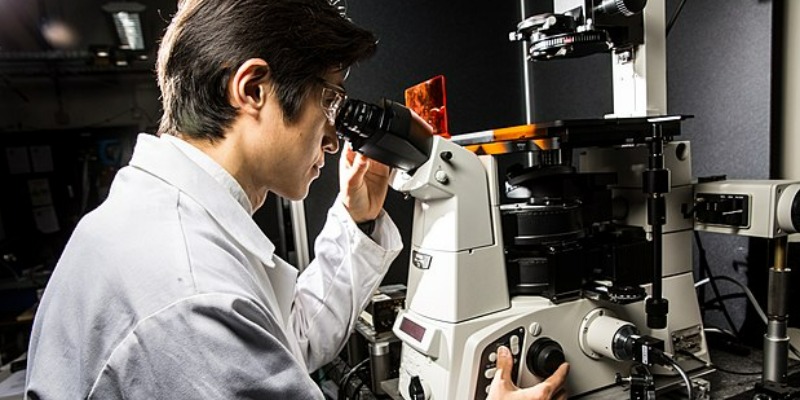
 What is the New Enzyme That Eats PET Waste in Quick Times
What is the New Enzyme That Eats PET Waste in Quick TimesWill the depolymerization of plastics through the new enzymes be the alternative to mechanical and chemical recycling? Today the production of plastic waste continues to exceed the capacity of their mechanical recycling, so much so that integrative solutions are being studied to reduce this gap. In addition to the countless avenues that could open up chemical recycling, biological engineering is making huge strides in identifying the correct enzymes that can degrade plastic. Through a study by a team of American scientists, aimed at identifying a modified enzyme, combinations of amino acids that could degrade PET in a shorter time were studied. faster than in the past. The organism has two enzymes that hydrolyze the polymer first into mono- (2-hydroxyethyl) terephthalate and then into ethylene glycol and terephthalic acid to be used as a source of power. One enzyme in particular, PETase, has become the target of protein engineering efforts to make it stable at higher temperatures and increase its catalytic activity. A team around Hal Alper of the University of Texas at Austin in the United States has created a PETase capable of degrading 51 different PET products, including containers and whole plastic bottles. In the construction of the study they used an algorithm that used 19,000 proteins of similar size and, for each PETase amino acid, the program studied their adaptation the environment they lived in compared to other proteins. An amino acid that doesn't fit well can be a source of instability and the algorithm suggests a different amino acid instead. Millions of combinations were then verified and, at the end of the analysis work, the researchers focused on three solutions that seemed to be the most promising ones. By further intervening with direct modifications, the scientists created a highly active enzyme on PET that worked quickly and at lower temperatures than in the past. At 50 °C, the enzyme is almost twice as active in hydrolyzing a small sample of a PET food container compared to another PETase engineered at 70 ° C. The enzyme even depolymerized an entire plastic cake tray in 48 hours, and the team showed it can create a new plastic item from degraded waste. It is important to emphasize that the tests were performed not on amorphous PET samples specially made in the laboratory, but on PET packaging purchased directly from supermarkets. This brings the tests performed even closer to the context in which they should operate, that is, in the context of recycling or depolymerization of plastics. It remains to be seen whether enzymatic depolymerization will eventually be used for large-scale recycling. In fact, most of the PET in the world is recycled not by depolymerization, but by melting and remodeling, but its properties deteriorate with each cycle. As we said there are some methods of chemical depolymerization, but they involve a very high energy consumption and, in view of the circularity of the products, the appearance of environmental impact that recycling entails must be taken into consideration, especially when renewable energies are not available. The great advantage of enzymes is that they can be much more specific than chemical catalysts and, therefore, it may be easier, in theory, to degrade a waste stream. Scientists do not hide, however, that the study of enzymes that depolymerize PET, however complicated and lengthy, could be even simpler than their applications on polyolefins or on mixed plastics. Automatic translation. We apologize for any inaccuracies. Original article in Italian.
SEE MORE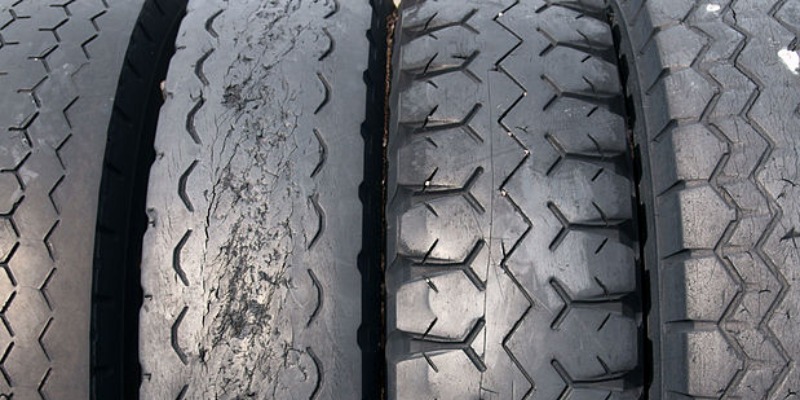
 What is the Devulcanization Process for Tire Recycling
What is the Devulcanization Process for Tire RecyclingWhat is the Devulcanization Process for Tire RecyclingIf we think that every car, motorcycle, truck, bus or any other wheeled vehicle uses tires for an average period of 1-2 years, and then replaces them with new tires, we can begin to understand how many used tires there can be in the world. If we then take a quick account of how many millions of vehicles on wheels circulate on earth, we can easily multiply the number of vehicles times the average number of tires fitted, resulting in an astonishing number. This astonishing number every 1-2 years expresses the waste, in the form of used tires, with which we have to deal, waste that if not treated correctly and put back into circulation, they dangerously burden the environment. If the ELTs (exhausted tires) are collected and managed correctly, they can become a resource because they contain rubber, steel and textile fibers which, through a process of recycling can generate secondary raw materials. In particular, the rubber powders and granules obtained from the volumetric reduction of tires, if subjected to mechanical, chemical, thermal or ultrasonic irradiated, undergo a process defined devulcanization, with variable results depending on the starting material and the technology used, as reported by a recent study by the mechanical and structural engineering department of the University of Brescia. It allows to regain a second raw material by breaking the bonds created between the polymer chains during the vulcanization phase. This process of the rubber constituting the tires is not only a potential method of recycling them, but represents, at present, the most promising approach to solve the difficulties related to the problem of environmental impact caused by the huge quantities of tires at the end of their life. Through the process called devulcanization, the rubber is brought back to a chemical structure close to that of the starting elastomer; this allows it to be added to normal compounds. Devulcanization is generally carried out in an autoclave using thermochemical processes using the joint action of temperature, pressure and chemical additives. The composition of the recycled tires is very similar to that of the virgin material of origin. In the form of granulate or powder, it can become part of the compounds used by the industry for numerous applications. The concept of "circular economy" currently assumes a predominant value as the substances of which the products are made will be increasingly treated as a resource equal to raw materials and no longer just disposed of. The perspective is therefore aimed at enhancing the activities aimed at the reuse of end-of-life tires (ELTs). DEVULCANIZATION Devulcanization is the process through which we try to separate the chemical bonds between rubber and sulfur, created thanks to vulcanization, and responsible for the elastic properties and mechanical resistance which make rubber a very popular material. Devulcanization involves the use of chemical, thermal and mechanical processes that are highly polluting, as they could release toxic gases into the environment; in addition, they require large energy consumption. Due to the use of chemical additives or high temperatures, there is a high risk that the polymer chains that make up the rubber itself break down, which would be denatured losing all its chemical and physical characteristics. In particular, the different modes currently used for this process are listed below: Chemistry: a quantity of chemical reagents at specific high temperatures and pressures is added to the rubber powder. Once the process is finished, the residues are rinsed, filtered and dried to eliminate any unwanted chemical impurities. Different devulcanizing agents can be used and, depending on the type chosen and the characteristics of the raw material used, different substances will be obtained leaving the reactor. For example, by using disulfides in the process it could be possible to obtain the formation of hydrogen sulphide (H2S), methyl or other thiols (organic compounds similar to alcohols in which the oxygen atom has been replaced by a sulfur atom, thus having the general formula R-SH: the functional group SH is called both as a thiol group and as a sulfanyl group). Since tire manufacturing uses zinc oxide and zinc carbonate, chemical devulcanization could also produce metal particles suspended in the air; therefore before release into the atmosphere it is necessary to provide for a specific treatment.Ultrasounds: in this method the residues are loaded at the head of a hopper and then introduced into an extruder which heats and softens the rubber through a mechanical action . Subsequently the material is subjected to the action of ultrasonic waves with an exposure of a few seconds. The synergistic activity of ultrasonic energy, heat, pressure and mechanical action contributes to the devulcanization of the rubber. The temperature reached in this process is about 110 ° C so it will generate a lower vapor emission and since no chemical additives are used to break the bonds of the sulfur formed in vulcanization, no dangerous emissions into the atmosphere will occur either. However, the gaseous residues will still be treated with activated carbon filters. Microwave: this methodology uses controlled microwave energy to devulcanize the elastomers containing sulfur. The material to be subjected to this process must be sufficiently polar to be able to accept energy at such a speed as to be able to generate the heat necessary to devulcanize the rubber. Biological: certain microorganisms are used to attack the sulfur bonds formed during the vulcanization of natural rubber. The biological contact time required for this process varies between 10 and a few hundred days. These microorganisms, being equipped with desulphurizing metabolic pathways, are able to selectively break the sulfur bridges present in the vulcanized rubber, without affecting the polymer chain. The microorganisms used, in fact, are equipped with metabolic pathways, in which specific enzymes selectively intervene to catalyze the breakdown of carbon-sulfur and sulfur-sulfur bonds of the rubber, without affecting the constituent polymers of the elastomer itself, which therefore is not destroyed. Automatic translation. We apologize for any inaccuracies. Original article in Italian. See recycled rubber products
SEE MORE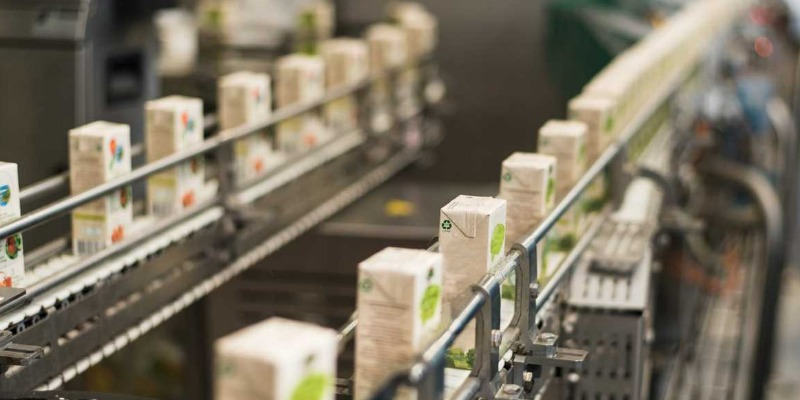
 Bisphenol A in Food Packaging: the EFSA Opinion
Bisphenol A in Food Packaging: the EFSA OpinionBisphenol A in Food Packaging: the EFSA OpinionAs we have already dealt with in the article "Polymeric coatings for metal food packaging" the massive use of pre-packaged food products, whether they are with metal, plastic or of other materials, raises the question of possible chemical substances, potentially dangerous for human health, that could be generated inside the package. Some of these substances can be generated by the transferring effect of the packaging materials towards the food, others concern the release of chemical substances that are generated by the food itself due to the packaging. Indeed, the European Food Safety Authority (EFSA) has reviewed the risks of Bisphenol A (BPA) in food by proposing to significantly lower the Tolerable Daily Intake (TDI) compared to that of its previous assessment in 2015. EFSA's new conclusions on BPA are set out in a draft scientific opinion available for public consultation until 22 February 2022. All interested parties are invited to participate. The TDI is the estimate of the quantity of a substance (expressed in relation to body weight in kg) that can be ingested daily throughout one's existence without worthy risks of note. In its 2015 BPA risk assessment, EFSA established a temporary TDI of 4 micrograms per kilogram of body weight per day. In its draft BPA from scratch, published today, EFSA's Expert Group on Food Contact Materials, Enzymes and Processing Aids (CEP group) established a TDI of 0.04 nanograms per kilogram of body weight per day. The lowering of the TDI is the result of the evaluation of studies that appeared in the literature from 2013 to 2018, in particular those that highlight adverse effects of BPA on the immune system: in animal studies an increase in the number of "T-helper" cells has been observed, a type of white blood cell which plays a fundamental role in cellular immune mechanisms and which, if increased, can lead to the development of allergic lung inflammation. Comparing the new TDI with estimates of consumer exposure to BPA via diet, EFSA concludes that both medium and high exposure to BPAs outperform the new TDI in all age groups, thus giving rise to health concerns. A systematic approach The dr. Claude Lambré, president of the CEP group, said: "This updated draft is the result of a careful evaluation lasting several years. We have applied a systematic approach to select and evaluate the available evidence. The new scientific studies appearing in the literature have helped us to address important elements of uncertainty about the toxicity of BPA." EFSA already assessed the safety of BPA for food contact materials in 2006 and 2015. Back then its experts only managed to establish one Temporary DGT due to some elements of uncertainty, underlining the need to fill the gaps found in the data. Automatic translation. We apologize for any inaccuracies. Original article in Italian. Source: EFSA
SEE MORE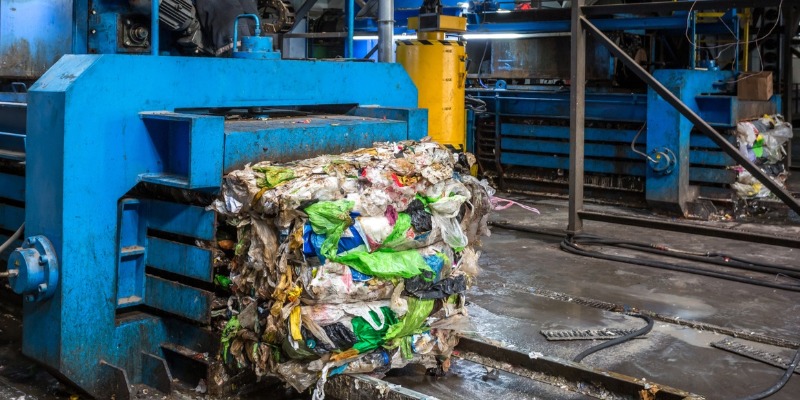
 How to improve the molding of non-aesthetic items
How to improve the molding of non-aesthetic itemsConsiderations on the production and use of the granule in PO (PP/PE)Non-aesthetic finished products intended for a disposable market were normally produced with PP compound made up of a mix of PP and PE (PO), coming from the granulation of waste from the selection of municipal waste. If we take into consideration plastic pallets or spacers for construction or boxes for fruit and vegetables, to give just a few examples, the mix between the two families of polymers allowed the production of compounds whose % of PP within the mixture varied from 30-40% to 60-70% depending on the expected recipe. The melt index at 230°/ 2.16 kg. it varied from 3 to 6 if the product had no added mineral fillers. The characteristics of the granule produced, and consequently of the final article, showed a good performance as regards compressive strength and a less excellent one as regards bending resistance. Regarding the ability to receive the colors in the granule extrusion phase or during the molding phases, I can say that, for as regards the dark color scale, the family of colors allowed a fair choice and the aesthetic appearance of the finished product was acceptable considering the product from which it started. Today the so-called PO, which identifies the polyolefin blend coming from separate waste collection, has taken on a different average composition compared to the past due to of the increased performance of municipal waste selection plants which tend to maximize the withdrawal from the PP/PE mix of polypropylene, HD and LD, as the offer of separate inputs on the market allows a contribution margin on waste that is significantly higher than the sale of the original mix. This, today, means having to work with a PP/PE mix that is qualitatively less performing than in the past as the balance between the three families, PP, HD, and LDs that made up the OP in the past have changed. Furthermore, the increase in the production of both waste to be processed and the demand for granules from PP/PE compounds has pushed some plastic waste treatment plants to speed up the washing phase to recover productivity by decreasing the quality of the ground or densified material needed to produce the granule. We can list some critical issues in the production of PO compounds: • Increase in the % of LD at the expense of HD in the polyolefin mix • Deterioration of the quality of the input washing due to the increase in the volumes to be treated and the different % of polymers in the recipe • Increased presence of bio plastics within the selected fraction which cause problems in the quality of the granule • Increased use on the market of packaging made with mixed plastics which involves a greater % of multilayer materials, such as certain labels, which are difficult to coexist with traditional PO . Regarding these changes in the basic composition of the PO and its processing, we will have implications to manage in the granule production phase and in the molding phase, at the in order to minimize the negative impacts of the quality of which the granule is composed. As regards production, action should be taken: • on washing times • on the size of the tanks • on water management • on the PO compound recipe for granulation • on filtration As regards the molding phase, the following should be done: • on machine temperatures • on the granule drying phase • on the verification of mold cooling The technical intervention on these critical issues leads to the following improvements: • Greater resistance to bending of the final product • improvement of aesthetic surfaces with reduction or disappearance of flashing on the finished product • Improved color homogeneity • reduction of the bad odor of the granule and the finished product • increase in the life of the screws and cylinders in the granulation phase and of the molds in the injection phase • healthier workplaces during the plastic melting phases.Category: news - technique - plastic - recycling - injection moldingSee more information on plastic molding
SEE MORE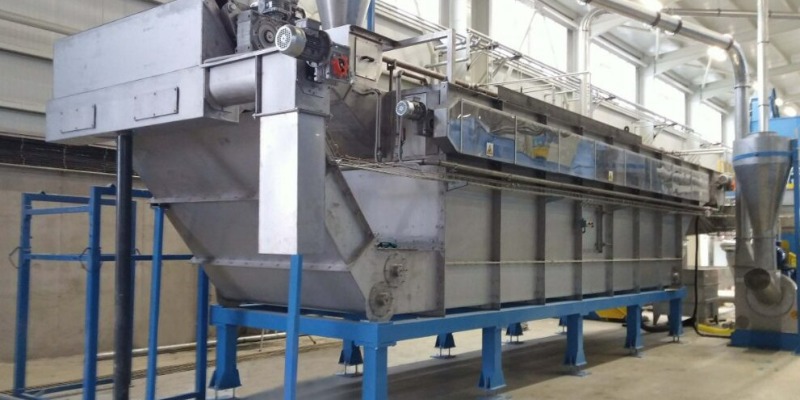
 The Washing of Post-Consumer Plastic Waste is Done in Three
The Washing of Post-Consumer Plastic Waste is Done in ThreeThe Washing of Post-Consumer Plastic Waste is Done in ThreePost-consumer plastic waste is, in quantitative terms, one of the major items that make up the basket of waste that our company produces. If until a few years ago intensive mechanical recycling was not applied but only noble plastics were tried to be separated and extracted, today environmental awareness and the need to reduce the transfer of waste to landfills has imposed an increasingly massive use of post-consumer recycled polymers for the creation of new finished products, making the supply chain as circular as possible. It was not a sudden turning point, it took time to subvert the cultural preconception that a product made with recycled polymers was second class compared to one made with virgin raw material. When public opinion cleared the use of recycled raw materials as a necessary and irreplaceable element of our life, the demand grew exponentially. There is no doubt that, from an industrial point of view, the treatment of post-consumer plastic waste for the creation of a raw material, which takes on a new aesthetic and structural nobility in products, today needs a decidedly more professional and qualitative approach to recycling than in the past. In fact, in the post-consumer plastic waste work cycle, which includes the collection, selection, grinding, separation, washing and granulation, it is interesting to focus on the washing phase to better understand some aspects. The concept of washing must include three basic steps that cannot be avoided, if you want to create a raw material suitable for the production of a good plastic granule . The three steps of the washing activity can be summarized here: • Washing of waste through a machine with forced washing, which allows, through the action of water and the centrifugal rotation of the plastic containment basket, a detachment of polluting parts, such as organic food residues, sand, earth or other, which otherwise would not occur in a traditional tank with water. • Use of a settling tank in which the materials, that have come out of the forced washing phase, follow a studied path, in terms of speed of movement and length, in which the plastic waste is separated by specific weight. In fact, materials with a lighter specific weight such as HDPE, LDPE, PS and PP, which make up the families with the greatest presence in post-consumer waste, remain afloat, while those with the highest specific weight such as loaded materials , PVC and other elements sink. • The last essential system to complete a good washing cycle of post-consumer plastic materials is the centrifuge. In fact, once the waste has been energetically washed and separated from plastics with different specific weight, it is absolutely necessary, before the production of the final raw material, to reduce the moisture concentration. By passing the waste itself into the centrifuge it is possible to reduce high humidity percentages that cause many problems, such as the degradation of the polymer, the creation of aesthetic defects on the finished product and a substantial reduction in mechanical performance. The washing phase, in the post-consumer material recycling activities, has often seen the assertion of a wrong theory, definable as "rinsing", where the process involved the '' immersion of the plastic ground in tanks with low water quality, a high rate of flotation of the waste and an inadequate tank length. All this was reflected in a decisive economic saving, an increase in the hourly production of the department but with a low or very low quality of the future polymer. If, in partial defense of this approach, we can recall that in the past the polymers derived from post-consumer waste were used only for low quality products, we must however remember that today, a higher quality is expected from this family of polymers as the user base has increased. A low quality level of the process during the washing, separation and drying phases, inevitably brings with it the problem of the odors of post-consumer plastics. If we talked previously about negative aspects related to the mechanics and aesthetics of the products, saving time and technology in the 3 phases that make up washing, increases considerable unpleasant odor in finished products made with polymers that have undergone a poor washing process. The presence of pungent and persistent odors in finished products not only leads to a reduction in sales in quantitative terms, but also leads to the depreciation of the article itself, with a reduction in the company's contribution margins. Automatic translation. We apologize for any inaccuracies. Original article in Italian.
SEE MORE
 Why are viscosity and molecular weight so important in pet?
Why are viscosity and molecular weight so important in pet?Why are viscosity and molecular weight so important in pet?In recycled PET, viscosity and molecular weight can determine the workability and quality of the product.When using a recycled PET resin, both by molding and by blowing and by thermoforming, it is important to understand what relationships exist between the molecular weight and the viscosity of the material. Speaking of viscosity and molecular weight , it is necessary to return with the mind to the great physicist Isaac Newton who was involved, among other innumerable scientific activities, also in the study of fluid dynamics. And it is precisely the dynamics of the fluids that somehow also interacts with some rules of behavior in the processing of PET , when we observe the change from the solid state to the semi-fluid state of the heated raw material. In fact, in the production of a PET object, whether by thermoforming, molding or blowing , the molten mass which is transformed into an extruder, creates flow parameters in which the molecular weight is of great importance. This value, in a polymer, is to be kept in the utmost consideration as it determines some mechanical properties such as rigidity, strength, toughness, viscosity and viscoelasticity . If the value of the molecular weight were too low, the mechanical properties of the PET product you want to make would probably be insufficient to achieve an appropriate quality. Changing the length of the chain leads to a higher molecular weight, with the consequence of an increase in the relationship of the individual polymer molecules and their viscosity, which will affect the processing and the quality of the product. If we want to take an example in the field of blowing, we can say that the variation in the molecular weight of the polymer will lead to greater or lesser ease in the formation of Parison or the preform. As we have seen, there is another parameter closely linked to the molecular weight value, which is the viscosity of the molten polymer , or also called flow resistance. An increase in molecular weight generally corresponds to an increase in viscosity in relation to temperature. The presence of heat , which is used to create the polymer flow, incising the material through an extruder or injector, allows the plastic to soften, increasing in volume and reducing its density. This involves the separation of the molecules that will move at different speeds , those in the center of the spindle which, not encountering particular obstacles, will have a different speed than the peripheral ones that will come into contact with the walls that contain them, thus creating shear forces ( stress from cutting ) caused by the difference in speed. We can therefore say that the viscosity of a material is also influenced by its speed , as the plastic materials, at the base temperatures, appear as tangled elements together, and as the flow velocity increases, a greater orientation of the molecules will be created with a reduction in viscosity. This type of behavior inserts plastic into those fluids called “non-Newtonians” , unlike water which maintains its viscosity even with increasing speed, returning to fluids defined as “Newtonians”. This makes us understand what happens to a PET fluid that passes through a head, a preform or a Parison, changing its viscosity, reducing the output flow and increasing the cutting forces.Automatic translation. We apologize for any inaccuracies. Original article in Italian.
SEE MORE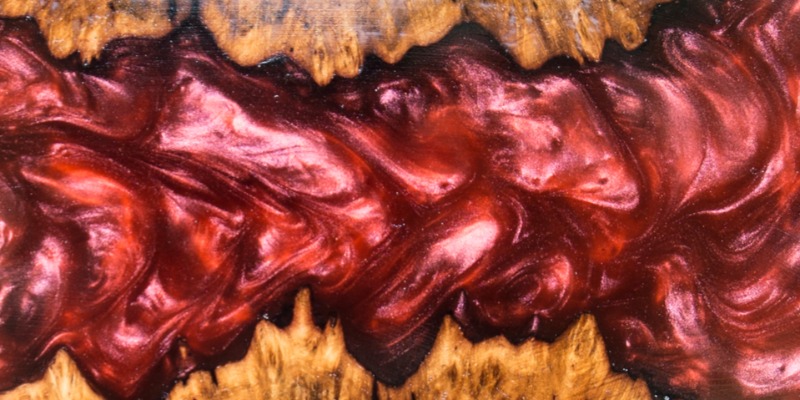
 Thermosetting resins
Thermosetting resinsChemical-physical, technological properties and related fields of application of thermosetting resinsGenerally, a resin can be defined as an organic, solid or semi-solid product, of natural or synthetic origin, without a precise melting point and, generally, of high molecular weight. Resins can be divided into: thermoplasticsthermosetting Thermoplastic resins are linear or branched polymers that can melt or soften without undergoing alterations in the chemical composition. They can therefore be forged in any form using techniques such as injection molding and extrusion. The process of melting-solidifying the material can be repeated without making substantial changes to the performance of the resin. Generally thermoplastic polymers are amorphous and do not crystallize easily, following a cooling, since the polymer chains are very tangled. Even those that crystallize never form perfectly crystalline, but semi-crystalline materials characterized by crystalline zones and amorphous zones. The amorphous resins, and the amorphous regions of the partially crystalline resins, show the phenomenon of the glass transition, characterized by the passage, sometimes quite abrupt, from the glassy to the rubbery state. This transition coincides with the activation of some long-range movements of the macromolecules that make up the material. Below the glass transition temperature (Tg), the polymer chains are in blocked positions. Both the melting temperature and the glass transition temperature increase as the rigidity of the chains making up the material increases and the intermolecular interaction forces increase. Thermosetting resin is a very rigid material consisting of cross-linked polymers in which the motion of the polymer chains is severely limited by the high number of existing cross-links. During heating they undergo an irreversible chemical modification. Resins of this type, under the action of heat in the initial phase, soften (become plastic) and then solidify. Unlike thermoplastic resins, therefore, they do not have the possibility of undergoing numerous forming processes during their use. The thermosetting resins, as we have seen, are very rigid materials in which the motion of the polymer chains is strongly constrained by a high number of existing crosslinks. In fact, during the production process they undergo irreversible chemical changes associated with the creation of transversal covalent bonds between the chains of the starting pre-polymers. The density of the interconnections and the nature depend on the polymerization conditions and on the nature of the precursors: generally they are liquid systems, or easily liquefied by heat, consisting of organic compounds with low molecular weight, often multifunctional, chemically reactive, sometimes in the presence of initiators or catalysts. In most cases they undergo a polymerization in situ by means of polycondensation and polyaddition reactions which transform them into thermosetting materials or into complex three-dimensional vitreous lattice structures, insoluble in the most common, infusible and degradable solvents when heated to very high temperatures. Many formulations require the presence of a comonomer, generally defined curing agent, provided with two or more reactive functional groups, and / or heat and / or electromagnetic radiation for reticulate. The cross-linking or cure reaction begins with the formation and linear growth of polymer chains that soon begin to branch. As the treatment proceeds, the molecular weight increases rapidly and the molecular dimensions increase because many chains begin to covalently bind to each other creating a network of infinite molecular weight. The transformation from a viscous liquid to an elastic gel, called “gelification“, is sudden and irreversible and involves the formation of the original structure of the three-dimensional network. Before gelation, in the absence of a cross-linking agent, the resin particles are separated from each other or interact only by virtue of weak reversible intermolecular forces, van der Waals forces. Then the resin is soluble in appropriate solvents. As the cross-linking reaction progresses, covalent covalent bonds are formed, a covalent gel, while weak interactions remain. Unlike the secondary valence gel that can be broken without difficulty, there is no such strong solvent to cause the breakdown of covalent bonds. Therefore the macromolecular structure created by this transformation does not completely dissolve but swells in the solvent because it still contains traces of monomer, free or aggregated, and soluble branched molecules, thus appearing in the form of a biphasic sol-gel system. This is the original structure of the thermoset three-dimensional network. Another phenomenon that can occur during the treatment reaction is the “vitrification“, ie the transformation of a viscous liquid or an elastic gel into a glassy solid, which marks a variation in the kinetic control of the reaction mechanism passing from a type chemical to a diffusive type. The reaction rate decays rapidly both because the concentration of reactive monomer is decreased and because its diffusion towards the reactive sites of the polymer bulk is slowed down by the presence of cross-links between the chains. However, the fact that there is a further increase in density shows that chemical reactions continue to occur but at much lower speeds. Among the various types of thermosetting resins, there are epoxy resins, which are essentially polyethers, but retain this name on the basis of the starting material used to produce them and by virtue of the presence of epoxy groups in the material immediately before crosslinking. The main use of epoxy resins is in the field of coatings, as these resins combine flexibility, adhesion and chemical resistance properties. A wide variety of resins are formulated to meet the most varied requirements taking into account the following parameters: Reactivity: the epoxy group reacts with a wide variety of chemical reagents. Flexibility: the distance of the epoxy groups can be varied according to the molecular weight, obtaining three-dimensional cross-linked systems with more or less wide meshes and therefore more or less flexible and elastic products. Chemical resistance and adhesion: the predominant chemical bonds are carbon-carbon and carbon-oxygen, bonds with remarkable chemical inertia. The hydroxyls are secondary and therefore of low reactivity. The polarity of the molecules and the hydroxyls are due to the high forces of adhesion to metal substrates. Thermal stability: closely linked to the density of cross-linking. Applications: epoxy systems have taken on great importance in those sectors where high performance is required for thermal, mechanical, chemical and electrical stresses. They are used in the automotive, space, aeronautical, naval, electronic and plant engineering industries, as main components in paints, adhesives, waterproofing, composite materials and for printed circuits.Automatic translation. We apologize for any inaccuracies. Original article in Italian.
SEE MORE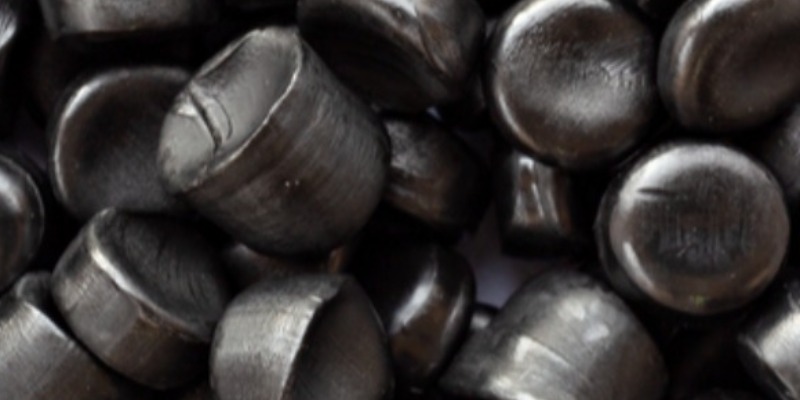
 Post-Consumer Recycled LDPE: 60 Types of Odors Hinder Sale
Post-Consumer Recycled LDPE: 60 Types of Odors Hinder SaleLDPE Recycled from Post-Consumer: 60 Types of Odors Obstruct Sales The separate collection of plastic packaging, especially for those in LDPE , is a modern achievement which allows, through recycling, the reuse of exhausted packaging with the dual advantage of reducing the carbon footprint and the withdrawal of natural resources from the earth to create new products. However, much still needs to be done in the recycling sector as the share of plastic that is collected and reused is still far lower than that which is produced every day. This quantitative imbalance between what is recycled and what is produced again has many causes: • Limited diffusion of separate waste collection in the world • Difficulty in recycling many multilayer plastic packaging • Low quality of recycled raw material • Lack of a recycling culture In countries where separate waste collection has started and functions stably, the production of recycled raw material suffers from a fairly negative judgment on its quality, caused by factors that also depend, but not only, on the mechanical recycling chain. This negative evaluation has a significant impact on the sales of the recycled raw material, relegating its use only to some sectors of use, thus reducing the salable quantities and lowering the average price per ton, which in turn leads to a low economic margin for companies that recycle. Furthermore, the less recycled granules sold , the less plastic waste that can be recycled and the greater the problem of its disposal becomes, risking the precious raw material that could be reused ending up in landfill. Among the problems that recycled raw materials suffer from, despite the enormous plant development in the sector, that of odor is among the most felt by customers who could use it to produce films, rigid packaging, materials for the construction sector, for automotive, gardening, furniture and many other products. To date, the perception of the smell of a post-consumer plastic raw material is entrusted, in a completely empirical way, to a nasal sensation of those who produce it and those who use it, who evaluate in an extremely subjective way both the type and the intensity of odors present in recycled plastic. An evaluation which can then clash with the end customer who will buy the product created and give a further personal evaluation of the smell. The human nose is certainly an excellent tool but each person perceives odorous stimuli in a completely personal way, and this is why, in particular cases, groups of people are hired to together evaluate the odors to be intercepted. If we take the plastics recycling chain as an example, starting from separate waste collection, we have seen that the LDPE bags and flexible packaging that go for recycling bring with them a very high number of chemical substances that generate odors in the recycling chain . The detection of odor sources has not been studied through empirical sensory methods, therefore through the human nose, but through a chemical investigation carried out by a laboratory instrument consisting of a gas chromatograph with an ion mobility spectrometer. This tool analyzed the chemical components within a large sampling of recycled LDPE coming from separate waste collection, identifying 60 types of chemical substances that generate odors. The sampling analyzed came from the traditional mechanical recycling cycle in which the material is selected, shredded and washed with a stay in water of approximately 15 minutes. The most common odors perceived by the human nose in this sampling were: • Mold • Urine • Cheese • Earth • Fecal • Soap • Coffee • Sweaty • Pepper These families of perceived odors are created by approximately 60 chemical compounds that come together during the collection and processing phase of recycled plastic. Some critical points have been identified: The separate waste collection bag containing domestic plastic packaging to be selected in which we find different types of polymers may contain residues of substances such as detergents, food, oils, disinfectants, chemical products, creams and many others. This mixture of different chemical elements can bind to the surface of the plastic but, depending on the association time, it could also penetrate inside it. The selection between the various plastics , through optical reader machines, creates a certain percentage of error which translates into the possibility of having mixed quantities of plastics within the selected fraction. The washing phase of the ground plastic has the function of further dividing, by density, the plastics introduced and has the aim of cleaning them from the residues of products that the packaging has contained or has come into contact with. With the exception of PET, the other polymers coming from separate waste collection are generally washed in cold water, a process that does not significantly affect the cleaning process in order to reduce odors. The extrusion phase of the washed material, for the formation of the granule, could lead to a degradation of the raw material in which there are fractions of polymers other than the main one which will therefore melt at different temperatures. This can cause the formation of chemical elements that will give rise to odors. Intervening on these phases would lead to a significant improvement in the quality of the post-consumer polymers produced, not only through a reduction in the types and intensity of odors, but would also improve their technical performance. The analytical control of odors , through tools that detect their chemical origins, can help not only in the certification phase of the odorous level of the final raw material in an unequivocal and no longer empirical way, but would also provide important support in the recipe creation phase on the types of raw materials to be used during the recycling phases of plastic waste, on the identification of the best sources and on the results of the production processes in the plant (selection, washing and extrusion). Reducing odors and improving the quality of post-consumer granules would lead to the opening of new markets in which recycled raw materials could be used instead of virgin ones with an environmental, economic and industrial advantage. Category: news - technical - plastic - recycling - LDPE - post-consumer - odors See more information on LDPE recycling
SEE MORE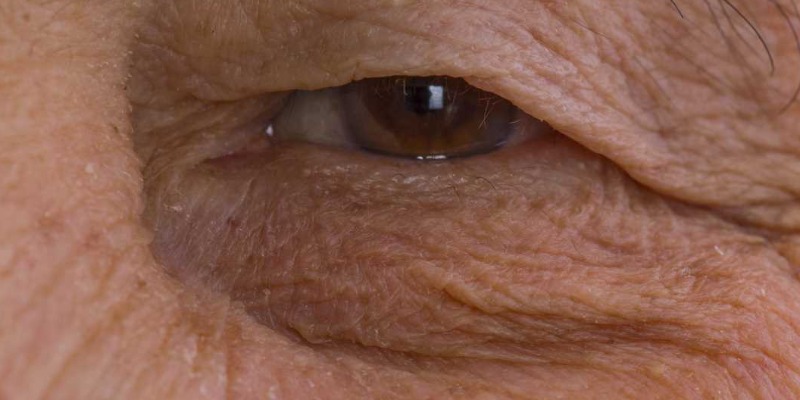
 Aging and Degradation of Recycled Polymers
Aging and Degradation of Recycled PolymersAging and Degradation of Recycled PolymersWe often talk about the degradation of recycled polymers due to factors concerning the transformation and recycling phases of raw materials, with negative consequences on the final product.Less is said about the aging phenomena of polymers that concern the amorphous ones and the amorphous part of the semicrystallines, below the glass transition temperature.While for aging the temperature conditions can affect or recover an ideal state of the polymer, degradation is, in itself, a more complex issue because it concerns, not only the components of the recycled polymer recipe, but also the processes of use. of the polymers themselves.Not being able to analyze the aging and degradation behaviors of all the compositions of recycled plastics, especially as regards those that come from post-consumption, we limit ourselves to illustrating the main causes that can determine the factors described above.The temperatureIf we take the conventional temperature at 20 ° we can say that the variations, positive or negative of the same, generate in the polymer significant changes in the mechanical characteristics and their behavior, which can change from ductile to brittle.In particular, the thermal degradation can be chemical, with the determination of the breakage of the links of the chains, or physical, with behavioral variations with respect to the status at the glass transition temperature.While physical degradation is always reversible, for the chemical one we always speak of the irreversibility of the phenomenon.Thermal degradation can be expressed visually with the yellowing of the product or in the partial loss of color.FireMost plastics are combustible and when they come into contact with high temperatures they can burn and develop harmful gases.When making the products, the fire behavior must be taken into consideration which, in addition to influencing the stability of the product, can create dangerous phenomena of toxicity.In some materials, however, the combustion is delayed or even inhibited thanks to the presence in them of significant quantities of chlorine (as in PC) or fluorine (as in PTFE or ETFE).Quick CoolingAs we have seen previously, a sudden change in temperature can cause aging in polymers. For example, a too fast cooling in the production phase of the product can create a phase of imbalance in the molecules with respect to the starting neutral state.However, with time, the macromolecules tend to move towards a condition of equilibrium, however, causing a slight decrease in volume, an increase in rigidity and thickening of the material.The SolventsPolymers such as PE, PVC, PTFE or ETFE, do not corrode electrochemically like metals, normally offering good resistance to acids on an inorganic basis, but can react with organic solvents (e.g. acetone) and sometimes with water (for example nylon).In this situation we can find as negative effects the breaking of the intermolecular bonds, the decrease of the elastic modulus and the swelling of the materials.OxidationThe reduction of mechanical properties can also be determined by oxidation: free radicals from the breaking of chemical bonds of the chains fix oxygen. Particularly sensitive to this type of degradation is polypropylene.Ultraviolet RaysThe action of ultraviolet rays is harmful in the long run, because it not only deteriorates the appearance of the material by bleaching or browning it, but also reduces its mechanical properties.Automatic translation. We apologize for any inaccuracies. Original article in Italian.
SEE MORE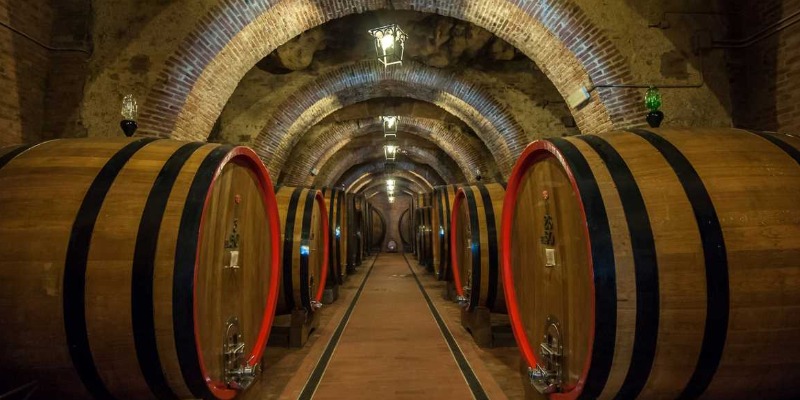
 The Modern Active Packaging with Millennial Roots
The Modern Active Packaging with Millennial RootsStudying how the packaging interacts with the product contained, how time, structure and chemistry make this relationship evolveThe current active packaging is well defined by the EC regulation 450/2009 which states: "... active materials and objects intended to come into contact with food products are materials and objects intended to extend the shelf life or maintain or improve the conditions of packaged food products. They are designed to deliberately incorporate components that release substances into, or absorb into, the packaged food product or its environment ”.It seems to be a conquest of our times to better preserve the products inside the packaging, whether they are food or other products, making them, at times, interact with the packaging that contain them.This means worrying and studying how the packaging interacts with the product contained, how time, structure and chemistry make this relationship evolve, finally verifying the pros and cons, on the product that will be used.In reality, the problem has already been addressed in some way over the past millennia, even without having the multiple packaging available today.There was no plastic, aluminum, Tetra Pack, but wood, glass and ceramic yes, and above all through the wooden barrels, our predecessors sensed that the barrel had a close relationship with the final quality of the wine.In fact, they realized that the fine wood barrels yielded polyphenolic substances to wines and spirits that improved the color, flavor and aroma of the product.Today, with the increase in the types of packaging available to us, the problems that we must consider and solve in order to control adverse reactions between packaging and product and encourage positive ones have also multiplied.Among those unwanted or harmful we can list:Humidity. This favors the proliferation of molds and bacteria in some cases, while in others it is necessary to control the aerobic respiration of plants and microorganisms. For these reasons it is necessary to act in order to be able to control the development of humidity in the packages based on the type of product contained. To do this, it is possible to use bags containing silica gel, calcium chloride and calcium oxide, or multilayer materials containing hygroscopic compounds, such as Pitchit film.Oxygen. Everyone knows that the presence of oxygen facilitates the reduction of the shelf life of stored food products as a result of reactions (chemical and enzymatic oxidations, degradation of pigments and aromas) and metabolisms (aerobic respiration, proliferation of aerobic bacteria, molds and yeasts). A widely used system is the preservation of food through vacuum packing, but there are other methods, such as sachets that absorb oxygen, consisting of small elements that, through a chemical reaction between metallic Fe and O2, reduce its presence inside. of the packaging. This methodology is not applicable to all packaging as the chemical reaction is triggered in the presence of a certain degree of humidity and the presence of iron can interfere with the automated logistics systems in the presence of metal detectors.Ethylene. Ethylene is a plant hormone that influences the aerobic process and the ripening of many fruits, therefore its reduction produces a slowdown in the ripening of the product. Substances capable of adsorbing ethylene, such as activated carbon, silica gel and zeolites, can be included in the packaging.Volatile compounds deriving from the degradation of food. Especially the lipid and protein degradation of food produces volatile substances with an unpleasant smell. Volatile aldehydes (hexanal, nonanal, etc.) produced during the oxidation of unsaturated lipids, can be intercepted by chemical compounds inserted in polyolefin copolymers (PE / PP). There are other chemicals, such as hydrogen sulfide (H2S) and volatile mercaptans (R-SH), which are generated by protein degradation, can be sequestered with specific adsorbents.Then there are protective and improving substances that interact with the products contained in the packaging. Taking a quick rundown we can mention:Antioxidants. Contained in the plastic materials intended for packaging production favor a protective action over time. There are also natural antioxidants, such as α-tocopherol, which is added in the production of specific packaging films.Natural Antimicrobials. They are substances responsible for controlling microbial proliferation in food that interact with the humidity and temperature inside the packaging in contact with the fresh product.Automatic translation. We apologize for any inaccuracies. Original article in Italian.
SEE MORE
 pp/pe recycled granules by post consumption: an almost perfect wedding
pp/pe recycled granules by post consumption: an almost perfect weddingIt seems like post-consumer polypropylene and polyethylene cannot coexist, but this is not always the case Sometimes even the most different copies, with distant attitudes and characteristics, with opposite character temperatures, with different tenacity and weaknesses, find a balance in their union. PP/PE also seems to have found this balance. In the field of polymers that derive from separate waste collection, there are families that are composed of two or more different polymers, such as the union between polyethylene and polypropylene. Apparently they seem like two worlds very distant from each other which, due to the need for consumption of plastic waste, has led to the new compound being given a position in the polymer market. The raw material that constitutes this union , deriving from the input of separate waste collection, is normally already mixed, and is made up of rigid parts and flexible parts of domestic plastic waste. Over the years this "natural" mix has changed a lot, as it has been necessary to extract an increasingly large portion of non-component plastics, such as polypropylene, high and low density polyethylene, from the waste bales. In fact, much focus has been placed on the extraction of the polypropylene fraction to allocate it to an independent market. What is today defined as PO or PP/PE is the resulting part of the selection processes of plastic waste resulting from separate collection, and is made up of approximately 30-40% polypropylene and the remaining part is predominantly LDPE. Compared to about ten years ago, today's PO base, or PP/PE , is certainly less performing, as the behavior of polypropylene on the low density polyethylene component is difficult to manage, both in the molding phase and in the aesthetic result of the final products. If we start from the consideration suggested by the circular economy, according to which we must find, in any case, a place for reuse for plastic waste, even this poor mix of PP/PE, with a little good will, can be used in many sectors. The polypropylene contained in the mix essentially brings with it the characteristics of rigidity and fluidity, while the LDPE brings with it flexibility and melting at low temperatures. The antagonism of their characteristics will have consequences in the molding phase and in the quality of the product if nothing is done during the production of the granule. To create a correct family of PP/PE suitable for many applications, which takes into account the different fluidities required by the market, correct temperatures both in the granule extrusion phase and in the molding phase, good resistance in terms of modulus and IZOD, compatibly with the low quality product we are talking about, it sometimes becomes necessary to modify the granule recipes: The first intervention that should be done is to work on the balance between PP and LDPE, through a quota of HDPE which mitigates the problem of the difference in melting temperature of the two original materials. This improves printability but also the reduction of possible streaks on the surfaces of the products. If it is desired to increase the fluidity of the compound to be obtained, the PP component can be increased, as the contribution of the post-consumer LDPE and HDPE fractions, in terms of MFI, will remain limited. The increase in the percentage of PP within the recipe must however be monitored, as it leads to an increase in the glassiness of the final product and reduces its resistance to cold. If you want to increase cold flexibility you can play on the LDPE/HDPE component, considering the right percentages based on the aesthetic requests, the degree of flexibility and the thicknesses of the products to be made. If you want to color the product, usually with dark shades, it is always advisable to add some Masterbach, for regenerated polymers, during the granule extrusion phase. This is because dispersing the dye in an extruder with a long screw brings better aesthetic efficiencies. In this case we must consider that the share of LDPE , which is the one most at risk for a possible degradation phenomenon under the effect of processing temperatures, should remain as low as possible to avoid aesthetic damage to the colors of the product. As regards the use of masterbach , given that these products can also be at risk of degradation during granule extrusion or during moulding, it is good practice to ensure which maximum temperatures they can withstand without altering. If you want to increase the rigidity of the products you can use mineral fillers, be they calcium carbonate or talc, which can give greater strength to the products from the point of view of compressive strength. However, you must be careful about the bending behavior, as PP/PE already has a low bending resistance value and the addition of excessive percentages of mineral fillers worsens its flexibility. The use of this family of PP/PE compounds has found widespread acceptance on the market for the production of non-aesthetic and low-cost products. The main sectors of use are: Construction with the creation of spacers for reinforcing bars, non-vehicular water channels, iron cover protection, buckets, plastic crawl spaces, vehicular grassy gratings, modular underground drainage tanks and other products. Logistics with the production of pallets, transport crates, pallet scaffolding, bin caps and other products. Agriculture with horticultural hooks, pots, disposable fruit and vegetable boxes, cultivation poles and other products. Garden furniture with the production of plastic rattan sofas and armchairs, small furniture, economical outdoor chairs and other products. The cleaning industry with support for broom bristles, small buckets, dustpans and other products. Category: news - technical - plastic - recycling - polymers - post consumer - granules - PP/PE
SEE MORE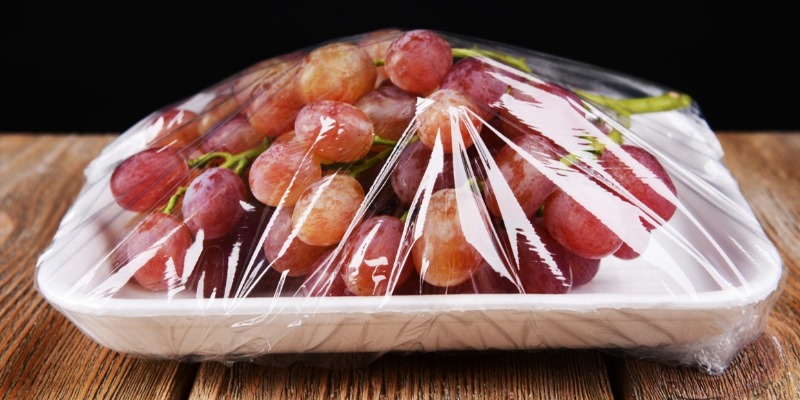
 If the food is consumable, the new bio film tells you
If the food is consumable, the new bio film tells youThe new packaging changes color based on the quality of the food it contains University and scientific research in the field of packaging is focusing on the problem of the effective expiration of food, studying bio films that can help us classify, in addition to the label affixed, the real quality of the food contained. The new bio-films are made of bio-plastics, made from the transformation of sugar contained in beets and corn, to which additives are added from waste from the agri-food sector. These additives are, in turn, waste from the agri-food chain such as hemp, flax, coffee waste, various vegetation waste, and other natural products . They have several properties that we can summarize: · Good mechanical properties · Fire resistant · Antioxidant properties · Antifungal properties · Antimicrobial properties Among the additives we talked about earlier, the addition of zinc oxide and aluminum, in the production of bio films, develops antimicrobial properties that can lengthen the expiration of fresh products, thus reducing the waste given by the expiration of the products. While the addition of an additive such as cardarol oil and a particular molecule called porphyrin, they attribute to the film antioxidant and antifungal properties , which in the field of food packaging help to signal the deterioration of the product. But how does this mechanism happen? When the bio film comes into contact with some analytes, such as water, ethanol, ammonia or other products that derive from food degradation, in combination with light, these toxic elements penetrate the polymer of the film creating color reactions . The films made in the laboratory are completely biodegradable and bio compostable , this means that at the end of their life cycle they can become fertilizer and re-enter in full respect of the circularity of the products.Automatic translation. We apologize for any inaccuracies. Original article in Italian.
SEE MORE
 Tensile Test on Recycled Plastic Materials: Why Do It
Tensile Test on Recycled Plastic Materials: Why Do ItIn the quality control of recycled plastic materials, the laboratory tensile test is of great importance When we approach the production of a plastic product , we need to collect a series of information regarding the quality and characteristics of the recycled raw material that we need to use. It is necessary to acquire certain data on the composition of the raw material, through laboratory tests such as DSC, density, fluidity, the presence of fillers, humidity and others, but there is also information regarding the mechanics of the material Before. These help us know how the finished product will behave when subjected to mechanical stresses, such as traction, bending, shear or compression. Every time we apply a force to a body it tends to deform, sometimes even imperceptibly to the human eye, as a response to the stress received. If the body returns to its primary condition at the end of the stress, this deformation is defined as elastic. In this type of deformation, all the work done to deform the piece is stored in the form of elastic energy which is then returned once the stress has been eliminated. Laboratory tests are used to understand in advance, i.e. before the product is made, what the elastic behavior of the body will be and what its mechanical limits will be. However, it must be kept in mind that the behavior of a real material can be different from the ideally elastic one: the presence of large deformations leads in fact to a plastic response of the material. But how does a tensile test on a specimen of recycled plastic material take place in the laboratory? First of all, it is necessary to create specimens according to current regulations, which will have a typical dog bone shape, and will have precise geometric and dimensional parameters. The prepared samples, obtained by injection moulding, according to the UNI EN ISO 527 standard , must be free from torsion and must have pairs of parallel surfaces, edges free of incisions, defects, surface depressions or burrs, with a total length of 149 mm . and a thickness of 4 mm. The laboratory machine, represented by a strain gauge , will graphically and analytically measure the deformation of the sample subjected to examination and will give us indications of the future behavior of the product we would like to create. This data, together with the other indispensable indicators, gives us an in-depth picture of the type of raw material we will use and will help us make any corrections both on the mixture and, possibly, on the production process. Category: news - technical - plastic - recycling - tensile test - quality
SEE MORE
 Coloring and Painting of Plastic Products
Coloring and Painting of Plastic ProductsColoring and Painting of Plastic ProductsThe products made of plastic, in addition to the countless economic-structural and environmental circularity qualities, also have the advantage of being able to accommodate, not only colors in the molten mass during the production of the element, but can also be painted on the surface to attribute to the object high aesthetic effects.The coloring of the plastic melt during the production of the object, through the use of dyes, takes place by mixing the granule or colored powders with the polymer of the product, taking advantage of the melting and mixing action that imprints the extruder inside which components pass.At the end of the production by the machine, the piece will be uniformly colored in the mass, a result for which the product could be suitable for the final use or it could be sent to the painting plant for special finishes.It is also possible that the pieces that must be sent for painting are produced without any color in the mass.That said, the paint layers on plastics must take into account the structure on which they adhere and the characteristic of the polymer with which the object is made.In fact, the hardness, the elongation behavior and the temperature of the paint layers to be applied on the product must take into account a possible physico-chemical reaction of the plastic it is made of.A too rigid dynamic behavior of a layer of paint applied to a plastic object could negatively affect the durability of the element, such as contact with temperatures and solvents that are required for the color spreading work.Some shades applied to plastics have a positive effect on the risk of photochemical decomposition, such as black, which positively affects UV protection by acting as a filter.Paints can incorporate chemical compounds that operate in a targeted manner in the production of certain elements, such as abrasion-resistant conductive paints, used in petrol tanks, or loaded with Ag, Ni or Cu to achieve high frequency shielding. of electronic equipment.There are also transparent paints that increase the scratch resistance for Polycarbonate and PMMA, such as acrylic, siloxane or polyurethane, applied by spray or immersion.In the coloring of plastic materials, powders can also be used, especially for polymers PA6 and PA66, which receive the coloring through a process that allows the polymer to be made conductive, through metal or ceramic microspheres, especially in the healthcare sector.Automatic translation. We apologize for any inaccuracies. Original article in Italian.
SEE MORE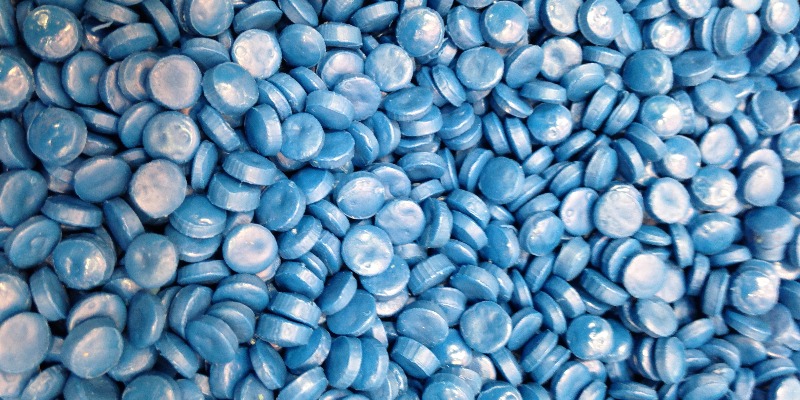
 Post Consumer Plastic: Collection, Recycling and Reuse
Post Consumer Plastic: Collection, Recycling and ReusePost Consumer Plastic: Collection, Recycling and ReusePost-consumer recycled plastic and recycled plastic polymers that derive from the separate collection of household waste are a relatively recent achievement in a world that is moving towards circularity of goods and resources.In the context of the circular economy , that area of interest that concerns the study and application of methods, production systems and legislative, suitable for recycling end-of-life products, plastic is certainly a primary player in collection, processing and reuse. Recycled plastic is defined as post-consumer when the product, in the form of packaging or finished object, fulfills the task for which it is produced and delivered, through separate collection, to mechanical recycling plants, to create new raw material in a sort of continuous circularity. In Italy, the collection of post-consumer waste and its basic selection is entrusted, predominantly, to national consortia, such as Corepla for packaging such as HDPE, PP, LDPE, PET and PS, Coripet for PET packaging only and Conip for rigid packaging from the sector fruit and vegetables, just to name a few. But each country, where separate collection is regulated and organized, has its own national collection structure or structures. Among the most collected and recycled products we find: • LDPE, low density polyethylene, which comes from the collection of flexible packaging, such as bags, films packaging, cover sheets, and rigid packaging such as flower pots. • HDPE, high density polyethylene, which mainly comes from the collection of detergent bottles and liquid cans. • PP, polypropylene, which derives from flexible packaging such as packaging films but also from rigid packaging such as boxes, bumpers, games, chairs, tables, construction products, such as pipes, siphons , grids, crawl spaces, tiles, buckets. • PS, polystyrene, which comes from packaging, jars and many items for the construction and electrical sector, such as sockets for electricity, electrical panels. • PET, polyethylene terephthalate, in post-consumer plastic is mainly expressed by bottles of mineral water and soft drinks. The processing of post-consumer plastic packaging involves in-depth knowledge of the collection chain, of industrial recycling systems of waste and the application of the resulting raw material for the creation of new products. The separate collection of plastic materials, but also of the other collected products, such as glass, metals, wood, paper, rubber contribute significantly to reduce the carbon footprint, to regulate waste management so that it does not go into the environment and to save raw materials that otherwise would have to be extracted from the planet. Collecting waste, recycling it, creating new raw materials from waste, producing new products through the circularity of the production and consumption system is one of the keys, but not the only one that allows the design of a better world. A supply chain of great importance, also at an economic level, which actively contributes to the budgets of the states to provide work and create an important sustainability among humans It's the nature. A supply chain that includes not only the production of raw materials obtained from waste, but also the machinery and molds industry for production and its control, producers of finished objects made of recycled plastic, service companies, transport companies, research institutions and much more. Automatic translation. We apologize for any inaccuracies. Original article in Italian.
SEE MORE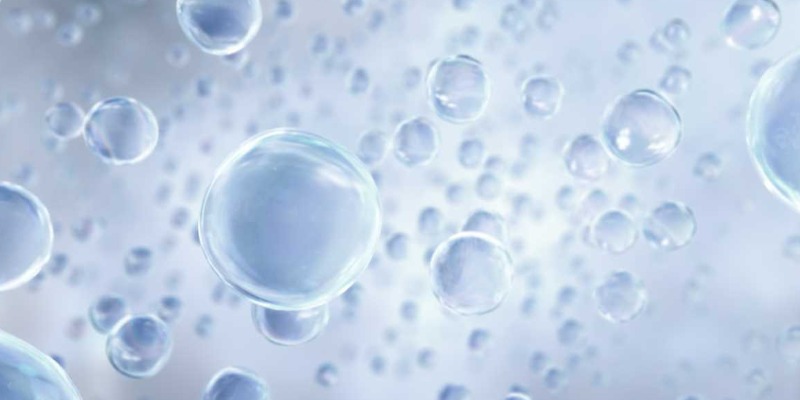
 Recycled Plastic Polymers: Drying or Dehumidification?
Recycled Plastic Polymers: Drying or Dehumidification?Recycled Plastic Polymers: Drying or Dehumidification?All plastic materials, virgin or recycled, in the form of granules or ground or densified, have a tendency to retain moisture, until they reach a balance with the external environment. This absorption capacity depends, as previously mentioned in another article, on the type of polymer, the air temperature and its humidity.Based on the above considerations, the polymers can be divided into hygroscopic and non-hygroscopic. In fact, in hygroscopic materials, water is absorbed inside the structure by chemically binding with it, while in non-hygroscopic polymers the moisture remains outside the mass, subsequently interfering in the manufacturing process.The plastic polymers, expressed in the forms of granules, ground, densified or powders, are sent for their transformation according to the product to be made and the type of process established.Whether the materials are hygroscopic or non-hygroscopic, the presence of humidity during the melting phase of the polymer mass creates considerable problems as water can become vapor, creating streaks, surface bubbles, irregular thermal shrinkage, structural tensions, deformations or breaks. .Humidity is one of the main causes of imperfections or defects on plastic products made but, at the same time, it is a problem largely neglected or underestimated by operators who mainly use recycled plastics.If we want to list some obvious defects caused by the presence of moisture in polymers, we can mention:• Opaque appearance of the product• Brown streaks• Silver streaks• Weak welding lines• Incomplete pieces• Burrs• Bubbles• Blowholes• Reduction of mechanical properties• Deformations of the element• Degradation of the polymer• Irregular aging• Irregular withdrawalsTo overcome these drawbacks, it is a good idea to dry the material before using it with air jets.In this case we can list two intervention systems, similar to each other, but with different results, which are represented by drying and dehumidification.For drying we can consider a process of insufflation of air sucked into the environment and introduced into a hopper in which the plastic material to be treated is located, for a certain time at a set temperature.This system depends greatly on the weather conditions and the degree of humidity in the air and is recommended only for non-hygroscopic materials.For hygroscopic materials, such as polyolefins, (PP, HDPE, LDPE, PP / PE just to name a few), the forced air drying system seen above is not sufficient, as the intrinsic moisture content in the polymer, makes the process of little effectiveness.In this case it is advisable to dry the polymers through dehumidification, which involves the insufflation inside the hopper, no longer of air in variable environmental conditions, but of air dehumidified through a dryer at a set temperature.The hopper must be insulated to reduce the dispersion of process heat and the material will be in motion, so that during the transit phase inside the hopper it can be hit with jets of hot and dehumidified air.The dryer will produce a constant flow of hot and dry air which will have the ability to significantly reduce the internal humidity of the hygroscopic polymers.Automatic translation. We apologize for any inaccuracies. Original article in Italian.
SEE MORE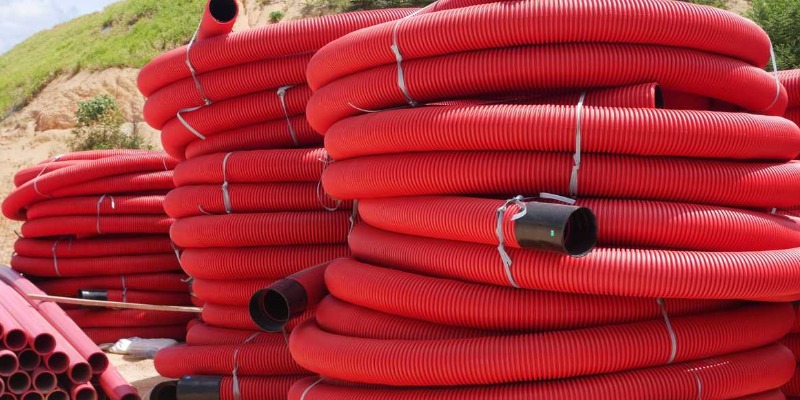
 The inner layer of the corrugated pipes
The inner layer of the corrugated pipesHow to obtain a correct internal wall of a corrugated pipe with a regenerated LDPE granuleBy producing flexible corrugated pipes in rolls or small double-walled rigid diameters, the problem of making a good quality inner layer has led manufacturers to frequently use virgin polymers due to the difficulty of generating a correct and durable wall with the material regenerated. In reality the inner layer of the pipes, due to its characteristics, needs special attention due to the small thickness of the wall, the tensions that are created in the co-extrusion phase and the different thermal movements with the external wall. The choice of the raw material normally falls on the LDPE whose main characteristic required is elasticity and good adhesion to the external HDPE layer. If you want to use a regenerated LDPE granule, keep in mind and analyze some important production factors to be able to choose a LDPE granule of quality suitable for the purpose. When we talk about regenerated granules, it is not sufficient to verify whether the product offered to us has a “pipe” grade, as it is sometimes mistakenly sold, since the inner wall of a corrugated tube requires a granule with well-defined characteristics. First of all we have to ascertain the origin of the input of the material that constitutes the granule, starting to understand if it comes from a post-industrial supply chain and from post-consumption. These two families, we will see later, have very different characteristics that will influence the production of the pipe in different ways. Secondly, we need to verify from which product the input is made to understand the history of the material being recycled and the possible problems it has encountered in its recycling life. The third thing is to verify the technical values, then the melt index, the DSC and the density of the material that will make us understand exactly how the granule we will use for the inner wall of the corrugated tube is made. The fourth thing is to know the production process of the granule proposed in particular how the selection of the waste is done, the washing and the extrusion to have more data that help us to choose the most suitable product. The last thing, very important for the granule that comes from post-consumption is to understand the degree of humidity present in the product at the time of purchase as a high value will affect the quality of the wall if no appropriate measures are taken. It is obvious that the points listed above are not completely exhaustive in the technical analysis of a granule, but I can say that for the application we are talking about today, they are a good starting point considering that they are data that are not difficult to find. If we want to go into the above points, we will start by talking about the input families that can be used for the production of the inner wall of the corrugated tube. We have seen that it is possible to produce a granule with material coming from separate collection or from industrial waste. The post-consumer supply chain makes it possible to have a quantitative source much greater than that coming from industrial waste and therefore it would seem the best way to satisfy production requirements, but the technical characteristics that the production of the internal LDPE wall of a pipe requires corrugated puts stakes to its use. By its very nature, the LD that comes from separate collection, despite a good selection and washing, presents a percentage of foreign materials (PVC, poly-coupled, PP, etc. ..) that behave in contrast to what we expect from the point qualitative view. The wastes that come instead from the production of LDPE articles are normally virgin or off grade materials, which by their nature are composed of mono-plastics and therefore do not contain impurities. There is usually no need to wash them and they have very specific technical characteristics. There are also LDPE Compounds made on the market using post-consumer and post-industrial portions, combining a selection of materials suitable for the production of the internal wall. If the verification of the origin of the post-industrial input does not involve great commitment, for the other two categories more attention must be paid. For post-consumption it is advisable to privilege material such as the film but which has not come into contact with domestic separate waste collection, for example garbage bags or food packaging, which carry pollutants that are difficult to completely eliminate. Another advisable source is the irrigation pipes which however need very accurate washing cycles as they contain a fraction of sand that compromises the quality if not completely removed. For the production of mixed post-consumer / post-industrial compounds, films from industrial packaging are normally used which have a collection chain separate from household waste, maintaining higher quality characteristics. As far as the quality control of the product granule is concerned, there are some essential tests I would say. The calculation of the MFI tells us if the material is suitable for the extrusion operation of our wall, this value should be between 0.5 and 1 at 190 ’/ 2.16 Kg. The second test is the DSC which gives us the radiography of our granule, an essential test especially if you want to use a post-consumer source. This test tells us how much LDPE in % is contained in the recipe and how many and which other components are present. The SDC, in particular, tells us if a granule can be suitable to create thin, homogeneous and smooth walls. Once the DSC test is done, it is easier to guess the result of the density value which is influenced, with respect to the standard value of the LDPE, by materials other than the primary one. A good rule for the evaluation of the quality of the granule to be chosen would be to know the history of the recycling that led to the birth of the same. After discussing the choice of input it is a good rule to know the recycling method that the supplier adopts. In particular, the type of washing significantly influences the presence of pollutants with high density in the waste, therefore, if the operation is carried out in short tanks or / and with a transit speed of the same high, or with a high concentration of pollutants in the wash water due to its low turnover, the probability of having a high accumulation of gas or rigid parts inside the granule is very likely. The second thing to check is the quality of filtration which is very much influenced by the quality of the washing. We could say that an increase in attention during washing can correspond to a lower performance requirement of filtering systems. In reality, correct washing in terms of tank dimensions, input transit speed and water quality are not topics that are very popular among recyclers as everything translates into higher production costs and sometimes granule prices from post-consumption are definitely compressed due also to the presence on the market of a low quality offer at low prices. In any case, if you want to make a good granule for the inner wall of the flexible corrugated pipe, these precautions should be respected including the correct filtering operation that would foresee the use of continuous or scraping plants with progressive filters up to 50 microns. As a last indication in terms of raw material I suggest an attention to the degree of humidity present in the LDPE big bag that is purchased because the presence of this involves a micro deformation of the surface film that makes up the wall of our pipe and a greater difficulty in terms of extruder speed. The excessive humidity creates that orange peel effect on the walls which is a kind of unsightly and non-functional roughness. However, the consequences of humidity, moreover normally solvable during the extrusion of the pipe, is not to be confused with the negative result produced by an accumulation of gas inside the granule, for which there are few weapons available.See more info about LDPE recyclingAutomatic translation. We apologize for any inaccuracies. Original article in Italian.
SEE MORE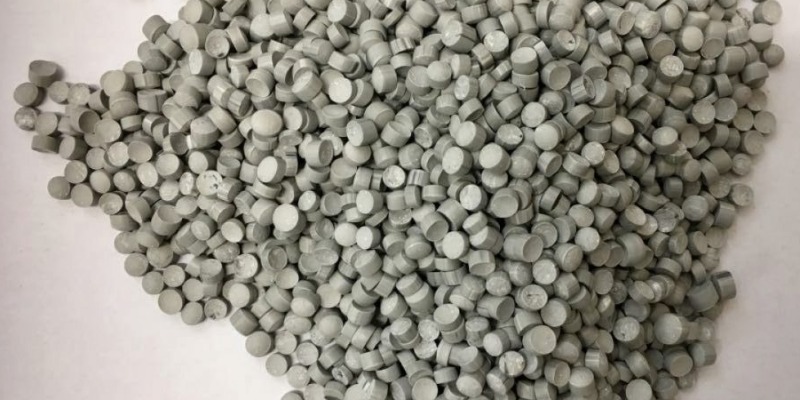
 Recycled PVC and Stabilizers
Recycled PVC and StabilizersWhat they are, what they are used for and how to choose stabilizing additives for recycled PVC It is important to know that pure PVC does not lend itself to almost no application: for this reason in the transformation processes additives are always added to the PVC that protect the polymer during processing so as to prevent its degradation and also allow to improve the characteristics of the resulting artifact according to its intended use.The formulation of the material is in fact defined considering three fundamental aspects: – Type of processing: the material must be able to withstand the stresses and temperatures involved in the process, be in the right shape (dry-blend, granule, latex, etc.), be sufficiently stable and have adequate properties for the type of processing; – Final application: the final use of the product, stresses, hostile environments, or even particular limitations imposed, for example, on contact with food or in the medical field, must be taken into consideration; – Cost: always important aspect; depending on the quantity and type of additives. A typical formulation, for rigid PVC, includes resin, thermal stabilizer (avoids degradation), process aids (improve the characteristics of the melt and the workability) and the lubricant. For plasticized PVC, a similar base is used, but plasticizers are added. Other additives are dyes and fillers. The fillers are inserted mainly to reduce the quantities of PVC for the same volume and therefore to reduce costs, but also affect the properties by increasing the hardness and rigidity of the finished product. An additive must neither evaporate during transformation nor exude towards the surface during the use of the product. This means that the additive must have a low vapor pressure at high temperatures and must not precipitate or crystallize by migrating from the polymer matrix during aging. While insoluble additives, such as fillers and pigments, do not give rise to these migration phenomena, on the contrary, soluble additives, such as low molecular weight plasticizers, are susceptible to migration phenomena both during transformation and during use , and can even act as a vehicle for the migration of other additives present in smaller quantities.Let’s take a closer look at stabilizers As is already known, the main disadvantage in the use of PVC is its thermal instability; in fact at about 100 ° C it undergoes a degradation called dehydrochlorination, ie it releases hydrochloric acid. This causes a lowering of the mechanical properties and a discoloration. The transformation of PVC into products always requires the addition of thermal stabilizers which avoid and reduce the propagation of thermal degradation, due to the development of hydrochloric acid of PVC during the gelation and processing phase. These products also allow to improve the resistance to sunlight, heat and atmospheric agents of the product. Finally, stabilizers have a strong impact on the physical properties of the mixture as well as on the cost of the formula. Generally they are added to 1% to PVC and remain firmly anchored to the polymer matrix. The choice of the appropriate thermal stabilizer depends on several factors: the technical requirements of the product, the current regulations and costs. The most common stabilizers are generally dispersed in an organic co-stabilizer which increases their stabilization characteristics. The main stabilizers are: tin stabilizers, cadmium stabilizers, lead stabilizers, barium / zinc stabilizers, Ca / Zn stabilizers, organic stabilizers. Stabilizers Ca / Zn Recently developed and with excellent success, they are proposing themselves as valid substitutes for lead stabilizers on a practical level and also on an economic level. Their operation is based on the same principles as lead stabilizers, but, unlike these, they do not cause environmental or human health problems. To improve the efficiency of these stabilization systems, sometimes other elements such as aluminum or magnesium-based compounds are added. For some applications it is necessary to use co-stabilizers such as polyols, soybean oil, antioxidants and organic phosphates. Depending on the type of stabilizing system, final products with a high degree of transparency, good mechanical and electrical properties, excellent organoleptic properties and a high degree of impermeability can be obtained. Hand in hand with the Ca / Zn stabilizers, calcium-organic systems are being developed which alongside the many positive sides: good processability, good thermal stability linked to the absence of Zn (the excess of which could trigger a sudden degradation of the product) have some negative sides such as the color tone of the base (tending to yellow). Organic stabilizers To date, organic stabilizers are not considered to be primary stabilizers and, even less, particularly powerful. Some are used because of low toxicity, others are used as co-stabilizers in combination with primary stabilizers. A particularly important representative who falls into this family of lubricants is epoxidized soybean oil. Epoxidized soybean oil is composed of 10% stearic acid and palmitic acid, for the rest of partially epoxidized polyunsaturated fatty acids. It is used in formulations in quantities ranging from 2 to 5 phr based on the function it will have. In a quantity less than 2 phr it will have a co-stabilizing function, in a higher quantity it will also have a lubricating function.Automatic translation. We apologize for any inaccuracies. Original article in ItalianSee more info about
SEE MORE